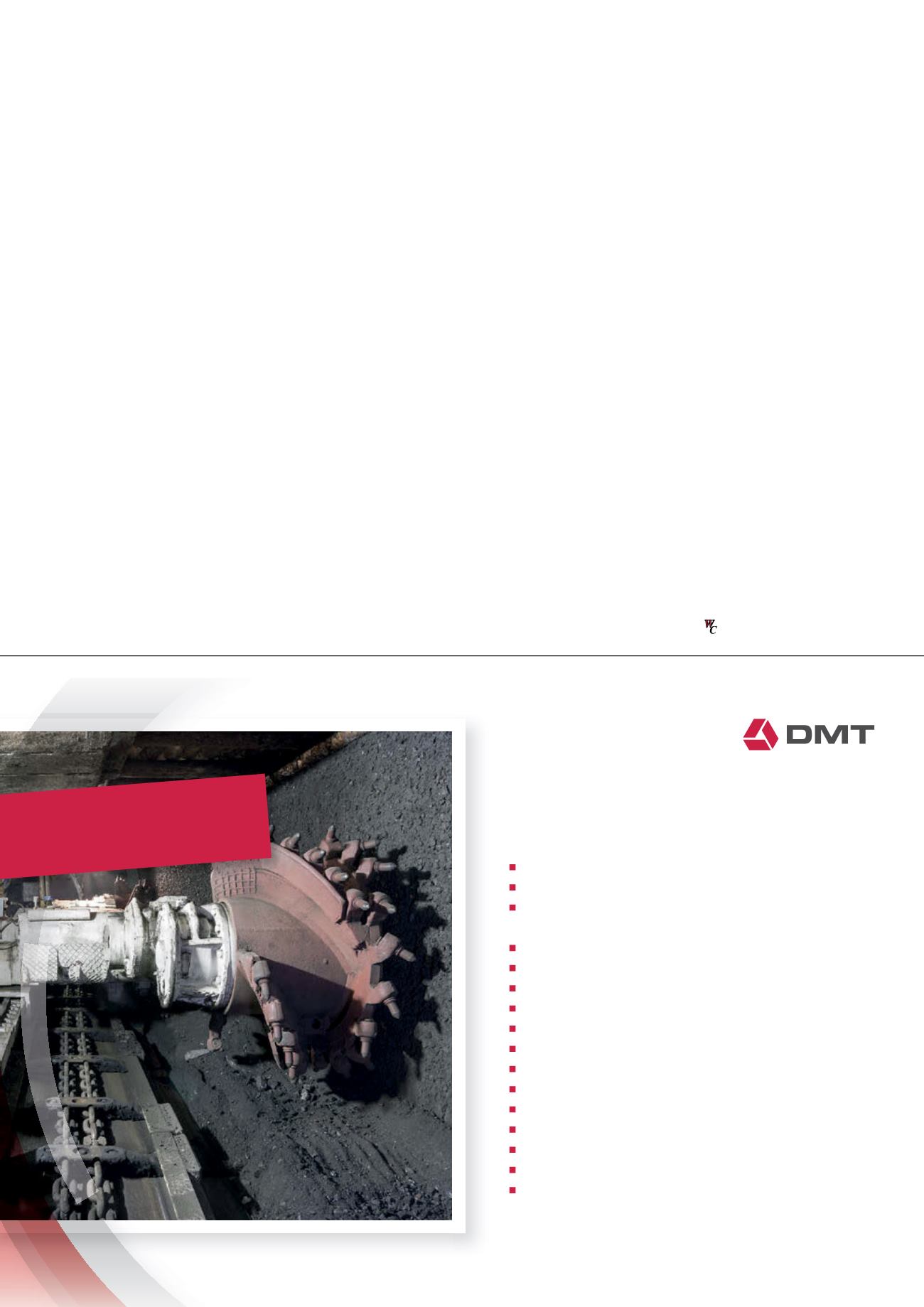
cable, causing downtime due to cable
failure. ANexans field engineer was
sent in to evaluate the situation. After
observing the CM in operation and
visiting shift electricians and the
electrical supervisor, it was determined
that they had encountered unusually
sharp-edged rocks falling from the rib
and roof, striking the cable hard and
creating tiny pin-holes (ruptures) in the
insulation. These pinholes caused
nuisance ground-fault tripping of the
circuit breaker and constant repairs.
The cable engineer suggested
replacing their 245 m length of
rubber-jacketed cable with a PUR
jacketed cable. PUR cables are not quite
as flexible as mould-cured
rubber jacketed cables, but they
offer higher overall resistance to
cuts and tears and are lighter in overall
weight.
This recommendation delivered a
significant improvement in overall
productivity. Due to reduced downtime
and cable replacement, the mine
estimated they saved US$53 000 for each
of their CMunits by making this switch.
Case study: hard rock
creates hot cable
Amining company was having
problems with premature cable failure
in high rock-content environments on
their CMs. The field engineer
determined that the cause was due to
overheating. The mine had been using
a 2/0 2kV SHD-GC round cable but
the rocky conditions required the CM
to operate over the maximum rated
amperes, which caused the cable to
overheat and fail. In this case, the
simple solution was switching from a
2/0 to a 3/0 cable. When this change
was made, downtime dropped back to
normal at the mine.
What’s next in mining
cables?
Technology has increased
dramatically with the use of fibre
optics within mining cables. Newer
excavating equipment and, in
particular, longwall systems are
providing mine operators a wide
assortment of critical, real-time
information through high-speed data
transmission. Incorporating fibre into
a mining trailing cable is now
commonplace as these composite
power/fibre cables have gained
acceptance. Improvements in fibre
splicing equipment and training
techniques have also made this option
more viable. Globally, several
longwall shearers are successfully
using Tiger
®
Brand composite cables
and Nexans is working with a
customer to develop an electro-fibre
cable that may someday allow its
longwall systems to be remotely
operated from the surface.
Future trailing cable designs will
focus on developing advanced
jacketing material and insulation
formulations, manufacturing
techniques, conductor configurations
and value-added safety features to
deliver higher efficiency, longer lasting
trailing cables. The combination of
appropriate cable jacket selection for
prevailing conditions, cable handling
training and focus on miner safety
should lead to greater productivity
and profitability.
Earth. Insight.
Values.
International
Mining Consultants
Services to the Coal Mining Industry
Geology, Exploration & Geophysics
Resource Estimation & Geological Modelling
Reporting (JORC, CIM, SEC, PERC & SAMREC,
CPR, MER, NI 43-101)
Conceptual, Feasibility and Bankable Studies
Mine Planning and Detailed Design
Rock mechanics, Strata Control and Rock Burst Prevention
Mine Gas Management and Ventilation
Optimization of development and extraction technologies
Construction & Backfill Materials Engineering
Coal Processing and Materials Handling
Equipment Selection and Logistics
Environmental Health and Safety
Project Management and Construction Supervision
Owner‘s Engineer and Operational Assistance
Independent Technical Advisors and Lender‘s Engineer
Coking Coal and Coke Properties Analysis
Visit DMT at PDAC, Canada
6-9 March 2016, stand no. 622
Visit DMT at Expomin, Chile
25-29 April, stand no. 174-1


